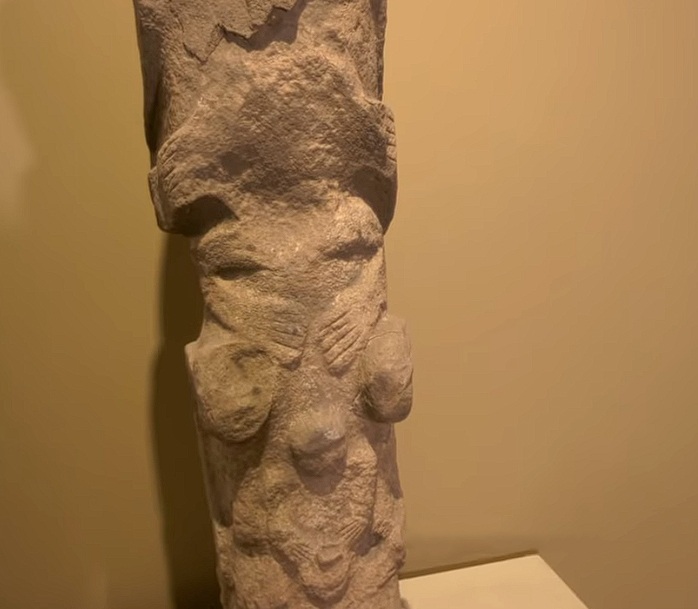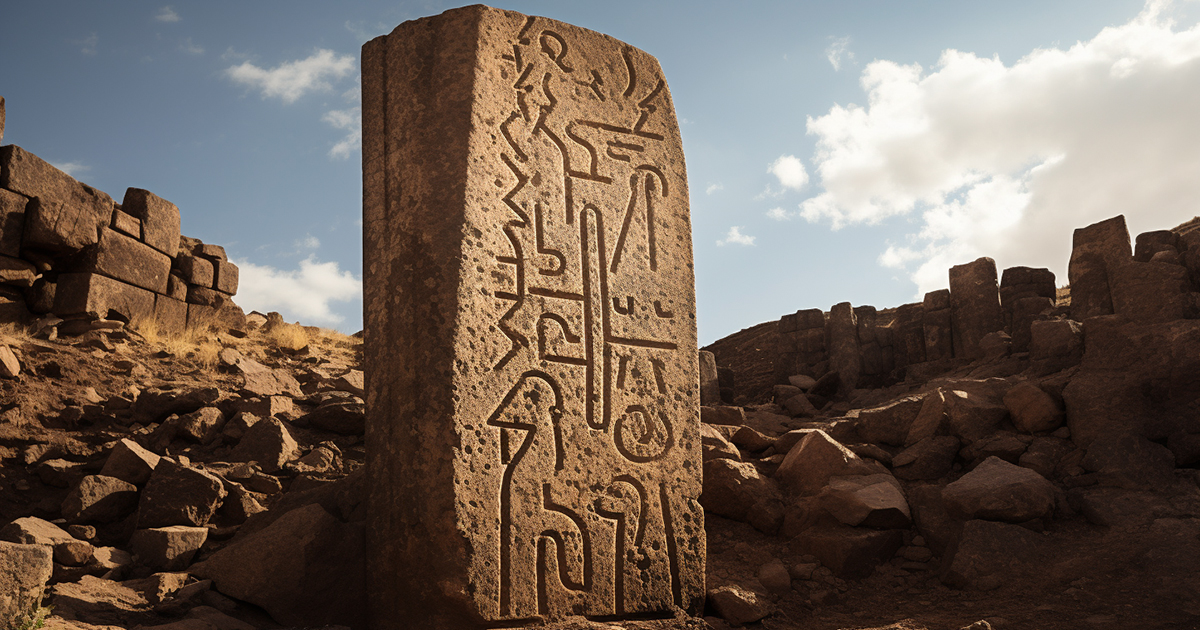An Introduction to the Enigmatic Location
Amidst the captivating realm of ancient mysteries and intriguing archaeological wonders emerges a singular site – Gobekli Tepe in Sanliurfa, Turkey. This ancient complex, boasting a legacy spanning over 11,000 years, is renowned for its intricate stone pillars intricately adorned with depictions of animals and humanoid forms. Among these remarkable structures lies a focal point of interest – a stone pillar bearing signs of defacement that urge us to contemplate its significance. Immersed in a spellbinding exploration showcased in Season 12, Episode 16 of the series “Ancient Aliens,” scholars delve into the enigmas encircling this beguiling pillar, sparking contemplation on its possible connections to the extraterrestrial lineage of humanity.
Encountering the Enigmatic Relic
The narrative unfolds with author and investigator Andrew Collins embarking on a voyage in June 2017 to the Sanliurfa Archaeology and Mosaic Museum, located a mere 10 miles from Gobekli Tepe. Nestled within this museum rests one of Earth’s most enigmatic stone edifices. Collins’ mission involves rendezvousing with curator Taha Ozyavuz to unravel the enigmatic secrets veiled within this ancient artefact.

Upon scrutinizing the stone pillar, Collins and Ozyavuz are mesmerized by its extraordinary attributes. The pillar reveals three distinct figures of varying scales, prompting the compelling question – what tale do these figures narrate, and why were two of them intentionally marred or eradicated in ancient epochs? Could there have been a purposeful endeavor to conceal a profound revelation about the genesis of humanity?
The Hypothesis of a Celestial Connection
Herein unravels the domain of ancient astronaut theory, proposing that entities from realms beyond our own may have exerted significant influence on the course of human history. Within this framework, the defaced stone pillar at Gobekli Tepe assumes a newfound layer of allure. Could it house cues regarding a genetic bond linking us to celestial progenitors?
David Wilcock, an advocate of ancient astronaut theory, contemplates the symbolism ingrained in the pillar. He accentuates a larger entity depicted on the pillar, potentially an extraterrestrial being, cradling another figure bearing human-like attributes. This secondary figure appears engaged in the process of birthing a human infant. Might this portrayal signify a breeding experiment catalyzing the evolution of contemporary humans?
William Henry contributes to the enigma by emphasizing the significance of totem poles as vessels of wisdom. Viewed through this lens, the stone pillar at Gobekli Tepe could be perceived as an ancient compendium or repository, safeguarding a genealogical lineage. Tracing this lineage may lead to the inference that our ancient predecessors were distinctly non-human, hinting at an extraterrestrial affiliation.
David Childress posits that the fundamental motive behind preserving such insights was to transmit knowledge about our extraterrestrial forebears to future generations. Consequently, the defaced stone pillar emerges as a cryptic missive from antiquity, awaiting decryption by those intent on unraveling the enigmas shrouding our ancestry.
Visual Presentation:
Closing Reflections
The defaced stone pillar at Gobekli Tepe presents itself as an enthralling enigma, spurring speculation and introspection. While the segment of “Ancient Aliens” raises stimulating queries regarding its symbolism and purpose, the solutions remain enigmatic. Was it an endeavor to veil the truths surrounding humanity’s extraterrestrial past, as some opine? Or does it encapsulate a more intricate and profound narrative about our antiquated history?
Gobekli Tepe endures as a testimonial to the mysteries enveloping our bygone eras. As investigators and archaeologists delve deeper into its riddles, we can only await the revelation of the truths encircling this enchanting site and its defaced stone pillar, shedding light on the profound kinship between humanity and the boundless cosmos. For now, it lingers as an enduring enigma, beckoning us to journey into the domains of ancient visitors and our own origins.
